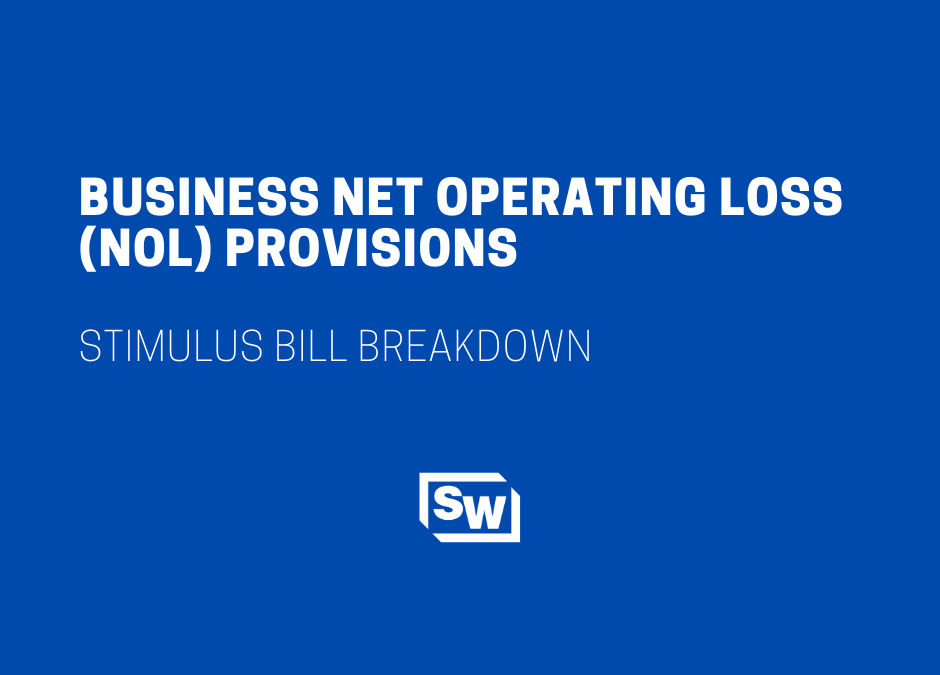UPDATED September 29, 2020 – New guidance has changed the handling of Net Operating Losses following the CARES Act of 2020. Read our blog update here.
ORIGINAL POST – On Friday, March 27, 2020, the Coronavirus Aid, Relief, and Economic Security (CARES) Act was signed into law by President Trump in an effort to provide economic relief in the wake of the COVID-19 (Coronavirus) pandemic. The CARES Act implemented numerous changes regarding Net Operating Losses. In this blog, we outline those changes.
Temporary Repeal of Taxable Income Limitation for Net Operating Losses
- As part of the Tax Cuts and Jobs Act, a net operating loss (NOL) may not be carried back but can be carried forward (exception for farming NOLs) indefinitely. A provision was put in place which limited the use of the NOL to 80% of current year taxable income.
- The CARES Act temporarily removes the 80% limitation, reinstating it for tax years beginning after 2020. The NOL may be used to fully offset taxable income, rather than 80% of taxable income.
- The CARES Act also modifies the NOL deduction limits for pass-through businesses and sole proprietorships to allow them to utilize excess business losses for 2018, 2019 & 2020.
- For the purposes of this temporary repeal, Real Estate Investment Trusts (REITs) are excluded from these provisions.
Modification of Rules Relating to NOL Carrybacks
- Under the CARES Act, an NOL incurred in tax years beginning after December 31, 2017, and before January 1, 2021, may be carried back to each of the five tax years preceding the tax year of such loss, including those years when the tax rates were 35%, even though the losses were generated in years when the tax rate was 21%.
- Businesses will be able to amend or modify tax returns for tax years dating back to 2013 in order to take advantage of the carrybacks.
- Carrybacks are not allowed to offset IRC Section 965(a) income in those taxable years. Section 965(a) relates to Subpart F income from foreign corporations.
- C Corporations may elect to file for an accelerated refund to claim the carryback benefit.
- A quick tentative tax refund based on an NOL carryback can be obtained by filing Form 1139.
- The tentative tax for which the refund will be based would be calculated on an amended tax return.
- Refunds will be received within 90 days of filing the application.
- If advantageous, a taxpayer can still waive the carryback and elect to carry forward an NOL to subsequent tax years.
- As part of this provision a technical correction was made to the excess business loss provision to clarify:
- Net operating loss and qualified business income deduction under Section 199A are not included in calculating an excess business loss, and
- The extent to which capital gains are taken into account in determining the amount of an excess business loss.
- Deductions for capital losses shall not be taken into account.
- Any capital gains taken into account shall not exceed the lesser of:
- Capital gain net income determined by taking into account only gains and losses attributed to a trade or business, or
- The capital gain net income.
- The technical correction would apply to years beginning after December 31, 2017.
If you have questions regarding the CARES Act’s changes to Net Operating Losses, please reach out to your personal Sciarabba Walker contact or email us at info@swcllp.com.

